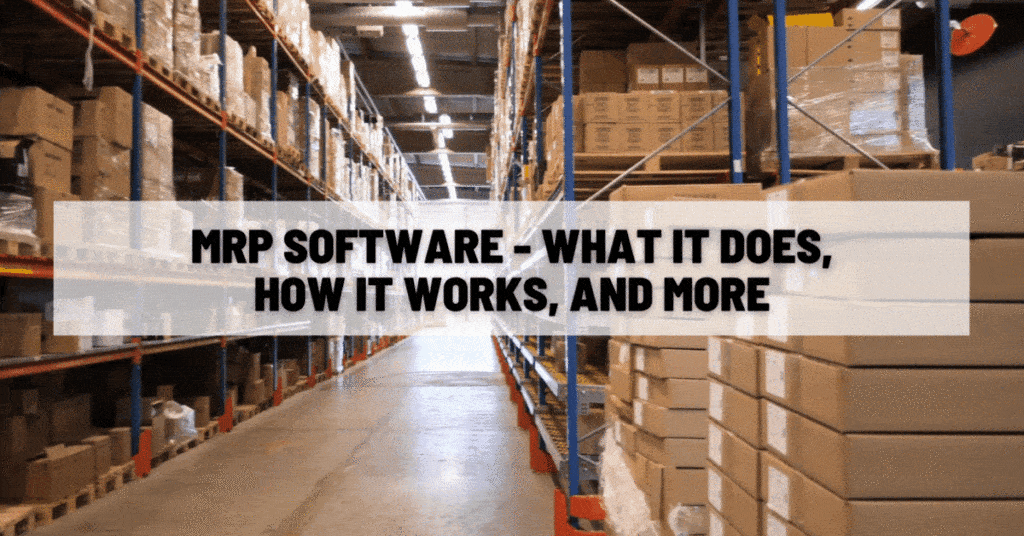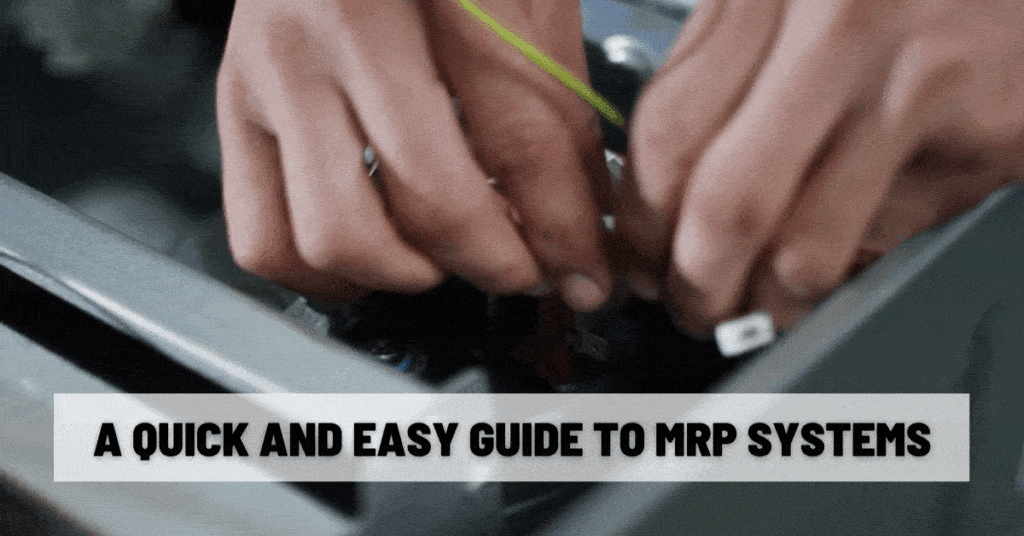MRP Software – What It Does, How it Works, and More
MRP (Manufacturing Resource Planning or, more archaically, Material Requirements Planning) is a method of managing manufacturing resources so you can efficiently balance products sold, units built, and materials required.
It’s used by manufacturers to manage many (but not all) aspects of their business, from planning production schedules to tracking inventory levels.

What Is MRP Software?
In broad strokes, MRP is the earliest computer-based inventory management method, designed to improve productivity. It’s a collection of techniques and practices that allows manufacturing businesses to predict their future inventory state and schedule key actions accordingly to optimize it.
The core idea behind MRP is simple: if you know how long each sub-assembly takes to make and where in the factory it’s made, you can plan ahead. You can see which raw materials need to be ordered when, and adjust your schedule as necessary based on whether those components have been delivered yet.
MRP is in many ways like an older sibling (or maybe cousin) to the more fully-featured, business-wide ERP systems. That design lineage means that most modern ERP systems have some degree of MRP functionality as part of their wide feature-sets.
A dedicated MRP system aims to optimize a business’ manufacturing process. No bells and whistles, just a simple goal done well (hopefully). A full ERP system likely contains all the essential MRP features as well as analogous tools for accounting, sales, and so on, all integrated into a cross-department database so everyone has access to any information they need.

How MRP Software Works
Under the proverbial hood, every MRP software suite is using 3 tools to do 4 tasks.
The tools are the master production schedule, bills of materials, and the inventory status records. In plain language, they keep track of what you need to make, what it takes to make it, and what you have on hand.
The tasks are EASE-y to remember. (That’s an acronym we came up with to help you remember the steps in the MRP process. We’re very proud of it.)
The short version is that MRP software uses the data you provide it to:
(1) figure out how much you want to produce (and of what)
(2) assign resources to those tasks and order whatever materials you’ll need more of
(3) design a schedule of the work based on the time factors that are outside your control
(4) monitor the process as it happens to spot changes of plan and approaching problems
If that sounds like a process that could benefit your business, then MRP software (or ERP software with robust MRP features) is probably right for you. If it doesn’t sound quite like something you’d use, check out our article on how to choose between ERP and MRP software.
To find out how AcctVantage ERP (with its MRP features) can support your ongoing business growth and success, click here to get in touch with us.




